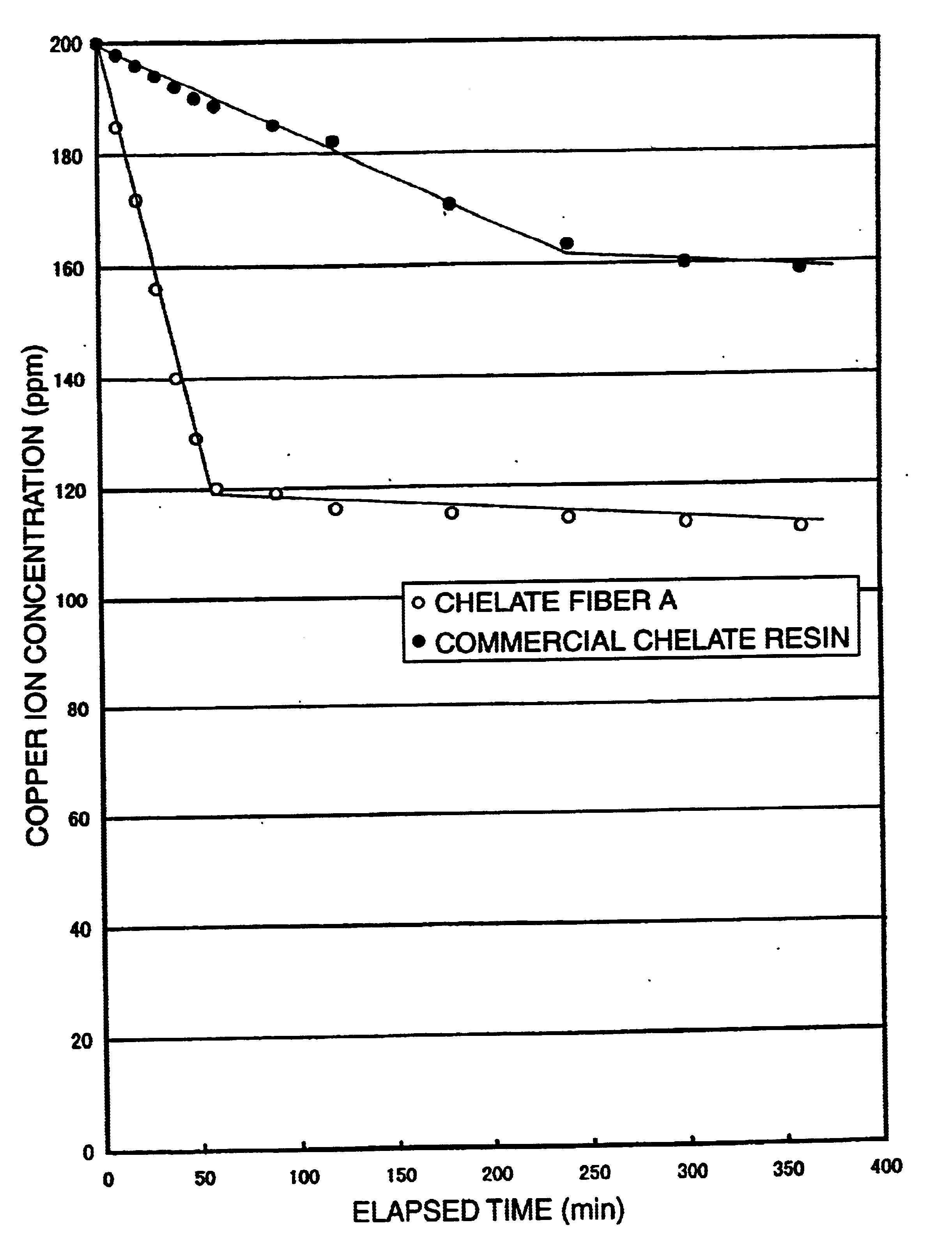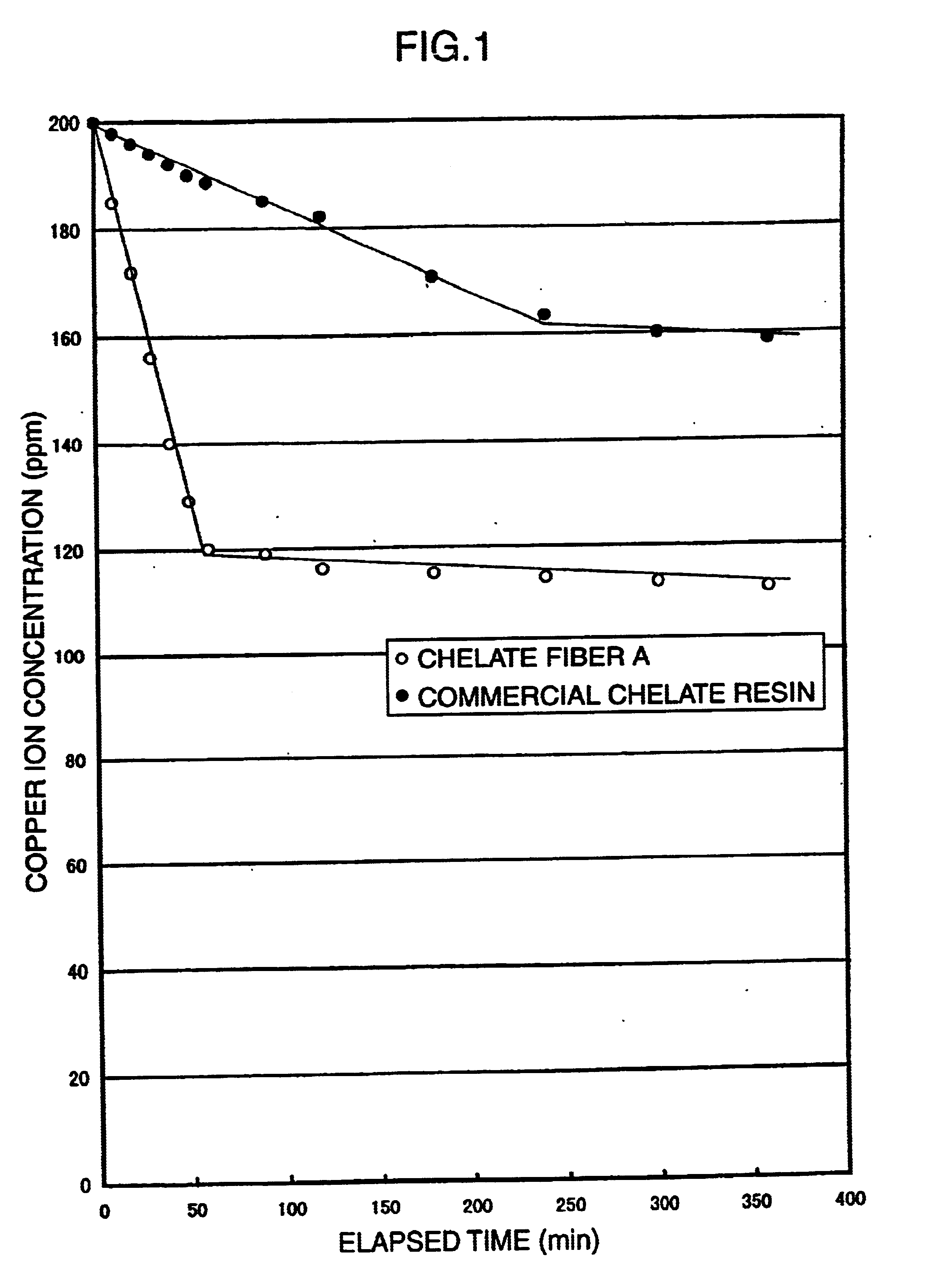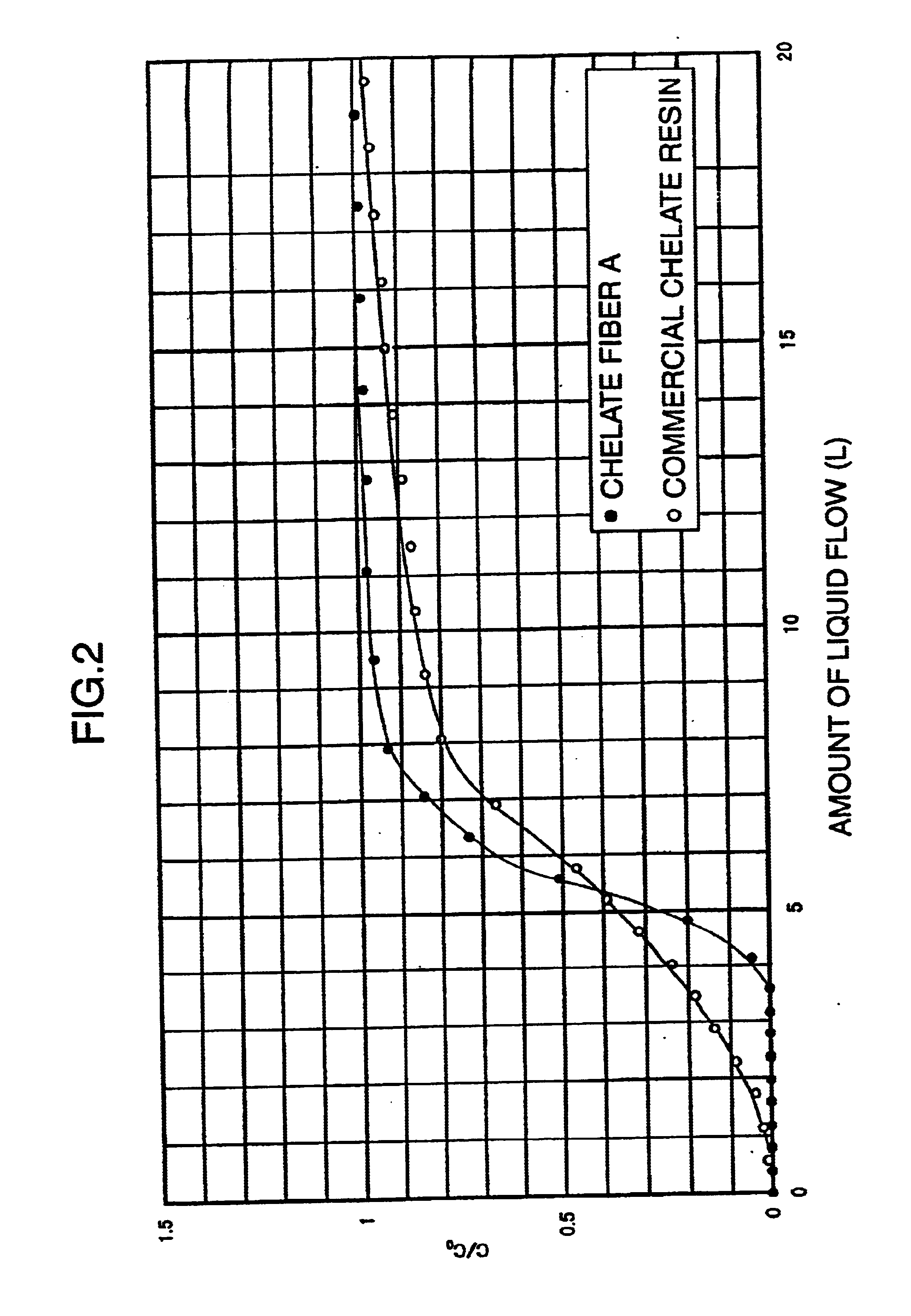Metal chelate-forming fiber, process for producing the same, method of trapping metal ion with the fiber, and metal chelate fiber
- Summary
- Abstract
- Description
- Claims
- Application Information
AI Technical Summary
Benefits of technology
Problems solved by technology
Method used
Image
Examples
example 1
A 5 g of potassium peroxodisulfate was dissolved in 250 ml of distilled water. 2.5 g of 6-nylon cloth was immersed in the resulting solution at 20° C. for 30 minutes and was centrifugally dehydrated, and then added into the solution which is prepared by dissolving 1.5 g of glycidyl methacrylate and 0.5 g of copper sulfate 5 hydrates into 250 ml of distilled water, and treated with the solution at 80° C. for 30 minutes. Next, the treated nylon cloth was rinsed with distilled water, was centrifugally dehydrated and was dried at 60° C. for 16 hours to thereby obtain 3.5 g of nylon cloth having grafted glycidyl methacrylate.
Next, 20 g of iminodiacetic acid was added into 100 g of distilled water, and the resulting solution was adjusted to pH 10 with a 50% aqueous sodium hydroxide solution. The above-prepared grafted nylon cloth was immersed into and treated with this solution at 90° C. for 2 hours. Subsequently, the treated nylon cloth was sufficiently rinsed with distilled water, disch...
example 2
A commercially available cartridge filter (produced by Rokitechno under the trade name of “micro-silia filter cartridge 250L-NS-1”, nominal pore size: 1 μm), which was produced by winding a nylon spun yarn around a polypropylene core in a twill pattern, was mounted to a polypropylene housing (produced by Advantec Toyo Kaisha, Ltd. under the trade name of “1PP-1-FS-000”). Separately, 200 g of potassium peroxiodisulfate was dissolved in 10 liters of distilled water, and the resulting solution was circulated through the filter at a flow rate of 15 liter / minute at 20° C. for 15 minutes using a circulating pump, was drained, and the filter was cleaned by circulating 5 liters of distilled water in the same manner.
Next, 60 g of glycidyl methacrylate and 10 g of copper sulfate 5 hydrates were dissolved into 8 liters of distilled water. The resulting solution was circulated through the filter in the same manner at 8° C. for 2 hours to thereby graft glycidyl methacrylate to the molecule of th...
example 3
The chelate-forming fiber was prepared in the same way of Example 1 except that 200 g of a 30% aqueous trisodium ethylenediaminetriacetate was used instead of the aqueous iminodiacetic acid solution, to thereby obtain 4.7 g (substitution rate: 88% by mass) of a metal chelate-forming fiber (chelate fiber C). The obtained chelate fiber C was subjected to the adsorption test in the same manner as Example 1. It was confirmed that the chelate fiber C was capable of capturing 1.0 mmol of copper per gram of the chelate fiber C.
PUM
 Login to View More
Login to View More Abstract
Description
Claims
Application Information
 Login to View More
Login to View More - R&D
- Intellectual Property
- Life Sciences
- Materials
- Tech Scout
- Unparalleled Data Quality
- Higher Quality Content
- 60% Fewer Hallucinations
Browse by: Latest US Patents, China's latest patents, Technical Efficacy Thesaurus, Application Domain, Technology Topic, Popular Technical Reports.
© 2025 PatSnap. All rights reserved.Legal|Privacy policy|Modern Slavery Act Transparency Statement|Sitemap|About US| Contact US: help@patsnap.com



